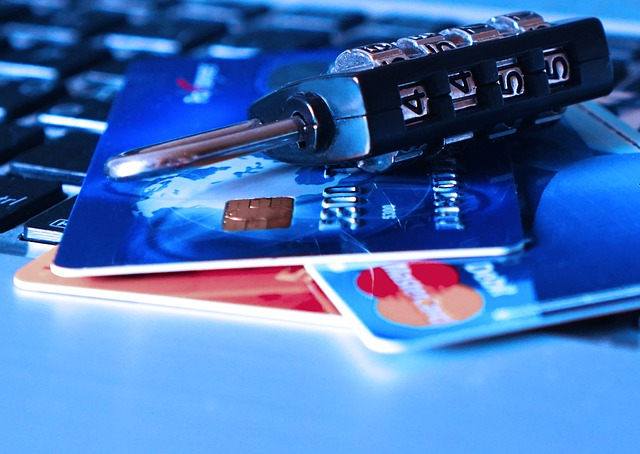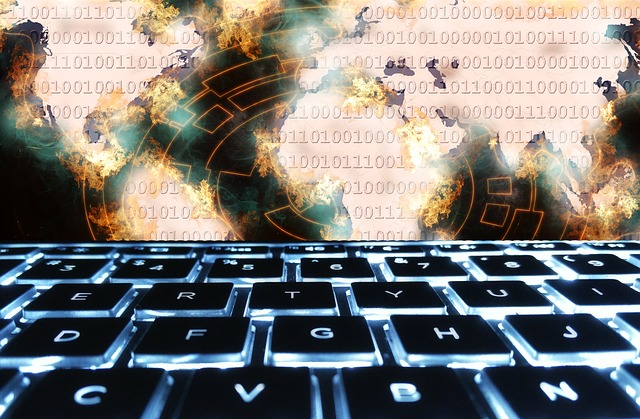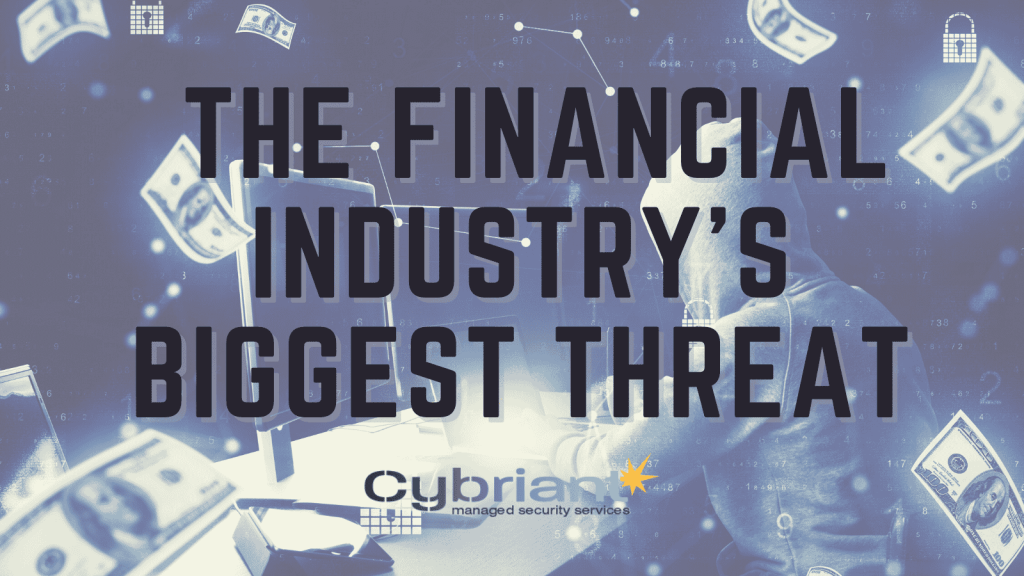Losing money to cyber criminals is the financial industry’s biggest threat today. Billions of dollars have been lost in 2022 alone due to cyber security incidents. This money is unrecoverable and can be blamed on one thing – poor cybersecurity practices. The money goes straight to the pockets of hackers so they can build bigger and better ways to hack and steal our money.
In this article, we will look at six of the most common cyber security threats that have caused losses of Billions in financial institutions and platforms across the world, and discuss the steps that you can take to protect your institution from them.
An ongoing research project has chronicled cyber incidents in the financial industry since 2017.
According to the website, here is a breakdown of the losses incurred because of cyber incidents in 2022 alone:
Beanstalk Farms Cryptocurrency Theft – United States – $180 Million LOSS
Ronin Cryptocurrency Theft – Canada – $615 Million in ether and USD Coin LOSS
IRA Financial Trust Cryptocurrency Theft – United States – $36 Million in cryptocurrency LOSS
Wormhole Cryptocurrency Theft – Switzerland –$322 Million worth of Ether currency LOSS
Qubit Finance Cryptocurrency Theft – United Kingdom – $80 Million worth of cryptocurrency LOSS
Multichain Cryptocurrency Theft – Multiple Locations – $1.4 Million LOSS
Crypto.com 2FA Bypass Hack – Multiple Locations – $35 Million in Ether and Bitcoin LOSS
Cyber Attacks Are On The Rise Costing Banks Billions
The threat of a nation-state group targeting your financial organization is very real and growing daily.
The active threat landscape includes viruses, malware, phishing attacks, and ransomware. These threats target banks of all sizes, from large global banks to community banks, and aim to inflict harm on financial industries around the world.

According to a study by security vendor Symantec, the average cost of a cyber security incident for a bank is $18 million.
There are several reasons why banks are such attractive targets for cybercriminals. Banks hold large amounts of customer data, including Social Security numbers, credit card, and account information, and addresses. This data is valuable on the black market.
In addition, banks handle huge sums of money every day, making them prime targets for attacks that seek to steal money.
Banks are working to improve their cyber security posture by investing in new technologies and hiring skilled cyber security personnel. However, the threat landscape is constantly changing, and banks must remain vigilant to protect their customers’ data and money.
Cyber security incidents can have a significant financial and reputational impact on a bank. Plus, hackers are a constant threat, and the threat posed could cost billions of dollars. As such, banks must continue to invest in cyber security to stay ahead of the ever-evolving threat landscape.
The Top 6 Cyber Security Threats That Cost Banks Billions
1. Ransomware
Ransomware is a type of malware that encrypts files on a user’s computer, and then demands a ransom payment to decrypt the files.
Ransomware attacks usually begin with a phishing email that tricks the user into opening an attachment or clicking on a link that downloads the malware onto their computer.
Once the ransomware is on the system, it will encrypt files and demand a ransom payment to decrypt them.
Ransomware attacks can have a significant financial impact on a bank. In addition to the ransom payment, banks must also pay for the cost of restoring their systems and data.
Ransomware attacks can also lead to customer churn and a loss of confidence in the bank.
How to Protect Against Ransomware Attacks
To protect against ransomware attacks, banks should invest in basic cybersecurity services as well as threat detection services. Consider working with a threat detection cybersecurity company. In addition, employees should be trained to spot phishing emails and avoid opening attachments or clicking on links from unknown senders.
2. Phishing
Phishing is a type of cyber attack that uses fraudulent emails or websites to trick users into disclosing sensitive information, such as passwords or bank account numbers.
Phishing attacks are often used to steal customer data or login credentials. These credentials can then be used to access the bank’s systems and commit fraud.
Phishing attacks can have a significant financial impact on a bank. In addition to the direct costs of the attack, such as customer refunds and legal fees, banks can also suffer reputational damage.
How to Protect Against Phishing Attacks
To protect against phishing attacks, banks should invest in email filtering and threat detection solutions. In addition, employees should be trained to spot phishing emails and report them to the IT department.
3. Advanced Persistent Threats (APTs)
Advanced Persistent Threats (APTs) are a new, advanced, and state-of-the-art type of cyber-attack that is very difficult to detect and can be very costly to businesses. They are often carried out by sophisticated hackers who have extensive knowledge of the target’s systems.
APTs can be very hard to stop, so it is important to have a strong cyber security posture in place to protect your business from these threats.
Some of the biggest banks in the world have been victims of APTs. In 2022 alone, financial industries have been hit with cryptocurrency losses. For example, Beanstalk, a decentralized finance platform, lost $180 million in a cryptocurrency heist.
How to Protect Against APTs
To protect against APTs, banks should invest in advanced threat detection and incident response solutions. In addition, they should have a strong cyber security posture in place, including firewalls, intrusion detection systems, and malware protection.
4. Malware infections
Malware is software that is designed to damage or disable computers and computer systems. It can be very difficult to detect and remove, so it is important to have strong security measures in place.
Malware infections can have a significant financial impact on a bank. In addition to the direct costs of the attack, such as customer refunds and legal fees, banks can also suffer reputational damage.
For example, in 2017, the bank TSB was the victim of a malware attack that caused widespread outages. The attack crippled the bank’s computer systems and resulted in millions of pounds in losses.
How to Protect Against Malware Infections
To protect against malware infections, banks should invest in advanced threat detection and incident response solutions. In addition, they should have a strong cyber security posture in place, including firewalls, intrusion detection systems, and malware protection.
5. Insider threats
Insider threats are a type of cyber attack that comes from within the organization. They can be carried out by employees, contractors, or third-party service providers.
Insider threats can have a significant financial impact on a bank. In addition to the direct costs of the attack, such as customer refunds and legal fees, banks can also suffer reputational damage.
For example, in 2015, a former employee of the bank HSBC was sentenced to six years in prison for stealing customer data. The employee had used his access to the bank’s systems to obtain the data, which he then sold to criminals.
How to Protect Against Insider Threats
To protect against insider threats, banks should invest in threat detection and incident response solutions. In addition, they should have a strong cyber security posture in place, including firewalls, intrusion detection systems, and access control measures.
6. Denial-of-service (DoS) attacks
Denial-of-service (DoS) attacks are a type of cyber attack that is designed to disable a computer or computer system. They can be very costly to businesses, as they can result in lost customers and revenue.
DoS attacks are being used in the 2022 Russian invasion of Ukraine. In February 2022, Ukraine’s State Service of Special Communications and Information Protection said several government websites and banks are dealing with a “massive DDoS attack” as the country prepares for a potential invasion by Russian-backed forces. Source
In addition, On February 28, 2022, the Moscow Stock Exchange and Sberbank, Russia’s largest lender, were hit by DDoS attacks that took their websites offline.
While its claims couldn’t be verified, the Ukraine IT Army, a crowdsourced community of hackers endorsed by Kyiv officials, called on members to launch attacks on the website. Source
How to Protect Against Denial of Service Attacks
To protect against denial of service attacks, banks should invest in security solutions that can detect and mitigate these types of attacks. In addition, they should have a strong cyber security posture in place, including firewalls, intrusion detection systems, and denial-of-service protection measures.
Cyberattack types on financial institutions include malware attacks, denial-of-service attacks, and phishing schemes.
One of the most common cyberattack types against financial institutions is known as a malware attack. This type of attack involves using malicious software, or malware, to gain access to a computer system in order to steal sensitive data or cause damage. Often, malware is downloaded
Security Issues in Banking Industry
The top security threats to banking and finance sector are:
1. Malware attacks
2. Denial-of-service attacks
3. Phishing schemes
4. Insider threats
5. Mobile banking security concerns
Malware attacks are one of the most common types of cyberattacks against financial institutions. This type of attack involves using malicious software, or malware, to gain access to a computer system in order to steal sensitive data or cause damage. Often, malware is downloaded unknowingly by the user when they click on a malicious link or open a malicious email attachment.
Denial-of-service attacks are another common type of attack against financial institutions. This type of attack is designed to flood a system with requests, rendering it unable to respond to legitimate requests and causing it to crash.
Phishing schemes are another common security concern in the banking industry. In a phishing scheme, attackers will send emails or texts that appear to be from a legitimate source in an attempt to trick the recipient into clicking on a malicious link or providing personal information.
Insider threats are another security issue that banks need to be aware of. An insider threat is when an employee, contractor, or vendor uses their legitimate access to a system to steal data or cause damage.
Mobile banking security concerns are also a top security issue for banks. As more and more people use their mobile devices to conduct financial transactions, there is an increased risk of fraud and data breaches. To help mitigate these risks, banks should implement strong security measures such as two-factor authentication for mobile banking.
Greatest Threat to Network Security
The greatest threat to network security is not viruses or hackers, but rather the users of the network. Every time a user logs onto the network, they are potential threats. Even if a user is not intentionally trying to harm the network, they may still accidentally do so.
For example, a user might click on a malicious link that looks legitimate. Or, they might download a file that contains malware. These kinds of mistakes can easily lead to a network being compromised.
Another way users can pose a threat to network security is by sharing passwords or other sensitive information. If a user shares their password with someone who is not supposed to have access to the network, then that person could easily misuse that information.
The best way to protect against these kinds of threats is to have strong security policies in place. For example, users should only be given access to the parts of the network they need to use. And, passwords should be kept confidential and changed regularly.
By taking these precautions, you can help ensure that your network is safe from the greatest threat: its users.
Protect Your Bank from Being a Victim of a Cyber-Attack
The best way to protect your bank from cybercriminals is to prevent any damage from happening in the first place. While you likely have the basics such as maintaining a good firewall and antivirus available, there is much more involved in building a resilient cybersecurity program.

There are several different ways that your bank can be attacked, from malware infections to denial-of-service (DoS) attacks. To protect your bank from being a victim of a cyber-attack, it is important to have a strong security posture in place, including firewalls, intrusion detection systems, and malware protection.
Advanced Threat Detection
In addition, your bank should invest in advanced threat detection and incident response solutions. These solutions can help you to quickly identify and respond to any security threats that may occur.
The same is true of modern Antivirus. Even when it can not identify the specific zero-day threat from its virus database; it can often identify malicious intent from learned behavior in the system.
CybriantXDR
Cybriant, a threat detection cybersecurity company, helps clients prevent cyberattacks with our CybriantXDR service. Our advanced team of cyber security analysts can even stop malware in its tracks. Check it out here: https://cybriant.com/cybriant-xdr/
Cyber security is important for all businesses, but especially for banks. Bank customers trust their financial institution with a great deal of personal information, including social security numbers, account numbers, and more.
To protect this information from being stolen by cybercriminals, banks should have a strong security posture in place, protecting critical infrastructure including firewalls, intrusion detection systems, and access control measures. When you are searching for the best finance industry cybersecurity companies, consider Cybriant. We help secure some of the top banks, credit unions, and more.
Security Technology Basics for Banks
There are a few security technology basics that every bank should have in place to protect against cyber-attacks.
An intrusion detection system (IDS):
An IDS is a security measure that monitors network traffic for malicious activity or policy violations. If an IDS detects suspicious activity, it can take action to block the traffic or alert a security administrator.
Access control:
Access control measures are put in place to restrict access to systems and data. This can include measures such as password protection, two-factor authentication, and physical security measures such as security guards and locked doors.
Malware protection:
Malware is short for “malicious software.” It is any type of software that is designed to damage or disable computers, networks, or data. Malware can be spread through email attachments, websites, and other means. To protect against malware, banks should have security measures in places, such as email filtering and web filtering.
Endpoint Security:
Endpoint security is a type of security that is designed to protect devices that are connected to a network. This can include laptops, computers, smartphones, and other devices. To secure these devices, banks should use security measures such as encryption, two-factor authentication, and device management.
Patch Management:
Patch management is the process of identifying and installing security updates for software and systems. By keeping systems up-to-date, banks can help to prevent vulnerabilities from being exploited by cybercriminals.
Network security:
Network security is a type of security that is designed to protect networks, such as the internet, from being accessed by unauthorized users. To secure networks, banks should use security measures such as firewalls, intrusion detection systems, and access control measures.
Physical security:
Physical security is a type of security that is designed to protect physical assets, such as buildings and equipment, from being accessed or damaged by unauthorized people. Physical security measures can include security guards, security cameras, and access control measures.
Cybersecurity insurance:
Cybersecurity insurance is a type of insurance that covers the costs of responding to a cyber-attack. This can include the cost of repairing damage, replacing lost data, and providing credit monitoring services for affected customers.
Vulnerability Management:
Vulnerability management is the process of identifying, assessing, and mitigating security vulnerabilities. By addressing vulnerabilities, banks can help to prevent them from being exploited by cybercriminals.
Security Services:
Security services are a type of security that is designed to protect networks, systems, and data from being accessed or damaged by unauthorized users. Security services can include security assessments, security audits, and security consulting.
Threat Detection:
Threat detection is the process of identifying, assessing, and responding to security threats. By detecting threats early, banks can help to prevent attacks and minimize damage.
Banks should also have a security awareness program in place to educate employees on security risks and how to avoid them. By teaching employees about cybersecurity, banks can help to prevent attacks
Cybriant can help you to protect your bank from being a victim of a cyber-attack with our CybriantXDR service.
Our advanced team of security analysts can help you quickly identify and respond to any security threats that may occur. Check it out today: https://cybriant.com/cybriant-xdr/

How can I tell if my bank is using the right security technologies?
When it comes to security, there is no such thing as a one size fits all solution. The type of security technology that your bank uses will depend on the size of your institution, your customer base, and the types of services that you offer.
Examples of Cyber Attacks on Banks
and Financial Institutions
Here are several examples of recent cyber attacks that have targeted banks and financial institutions:
- In June 2022, Flagstar Bank disclosed a data breach that leaked the personal information of 1.5 million customers. Source
- In November 2022, India’s leading central securities depository, Central Depository Services Limited, or CDSL, said its systems have been compromised by malware. Source
- FTX , a cryptocurrency exchange, announced that more than $600 million was siphoned from FTX’s crypto wallets in November 2022. Source
SIEM for Banking Industry
A SIEM is needed for the banking industry to protect its systems from cyber threats. By having a SIEM in place, the bank can monitor their system for malicious activity and take steps to protect their customers and their data. In addition, a SIEM can also help the bank to comply with regulations such as the Gramm-Leach-Bliley Act (GLBA) and the Sarbanes-Oxley Act (SOX).
How can I prevent cyber-attacks?
There is no silver bullet when it comes to preventing cyber-attacks, but there are a few key steps that you can take to help protect your bank.
1. Maintain a strong security posture
2. Invest in advanced threat detection and incident response solutions
3. Educate your employees on cybersecurity best practices
4. Implement security awareness training for your customers
5. Stay up to date on the latest security threats
By taking these steps, you can help to protect your bank from being a victim of a cyber-attack.
Consider Outsourcing to a Managed Security Services Provider
Outsourcing your bank’s security needs is a great way to protect against advanced cyber threats. Managed security services can provide your bank with the latest security technologies, threat intelligence, and incident response capabilities.
In addition, managed security services can help you comply with regulations and industry standards.
If your bank is considering outsourcing its security, there are a few things to keep in mind.
First, you need to find a reputable and experienced security provider.
Second, you need to make sure that the security provider can meet your bank’s specific needs.
And third, you need to ensure that the security provider can scale as your bank grows.
When it comes to security, banks can’t afford to take risks. Outsourcing your security needs to a reputable and experienced security provider is the best way to protect your bank from cyberattacks.
Managed security services can help you protect your bank from being a victim of a cyber-attack. Here’s how:
1. Threat detection –
managed security services can help you identify and mitigate threats before they happen.
2. Compliance –
managed security services can help you ensure compliance with industry regulations.
3. Peace of mind –
knowing that your security is in good hands can give you peace of mind and allow you to focus on your business.
Cyber-attacks are becoming more sophisticated and costly. Don’t let your bank be a victim. Protect it with managed security services.
Outsourcing security has become a popular solution for banks trying to keep up with the rapidly changing landscape of cybersecurity.
Managed security services can provide comprehensive protection, including threat detection and compliance. Contact Cybriant today to learn more.
Examples of Ransomware: 7 Cyber Security Trends To Fight Back




